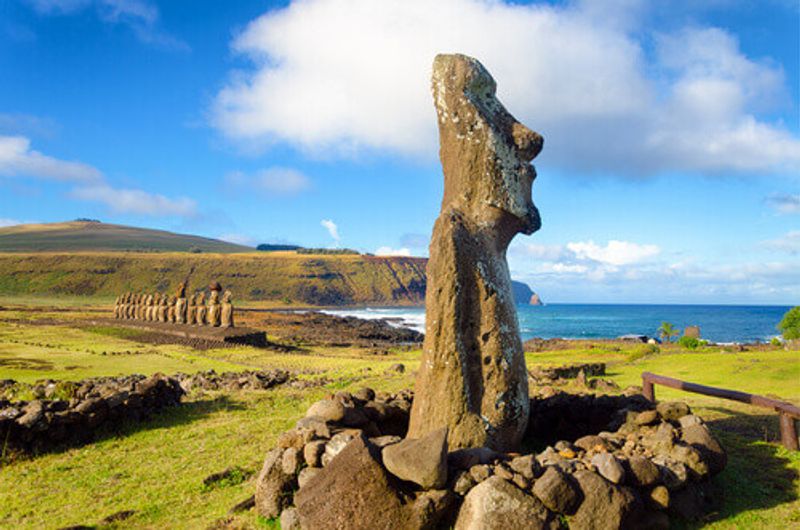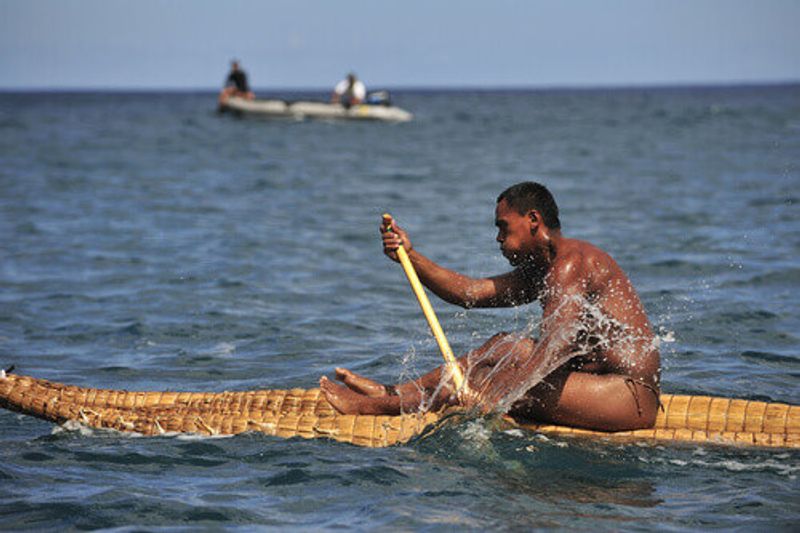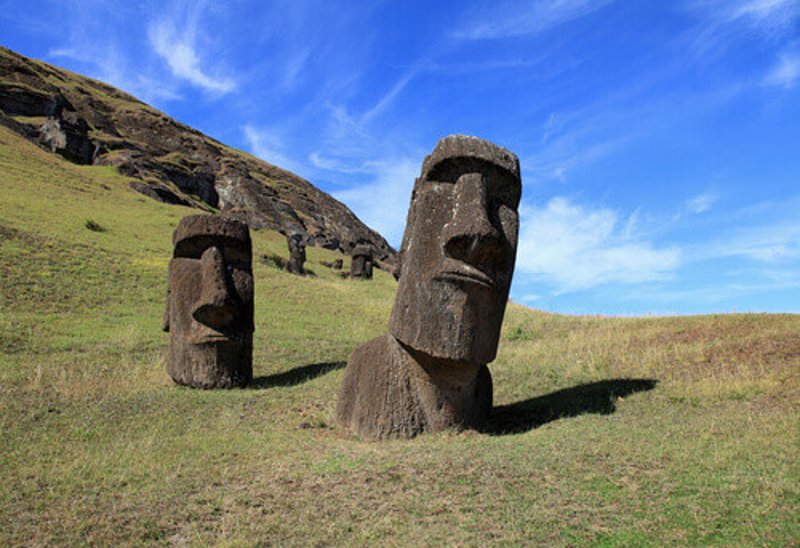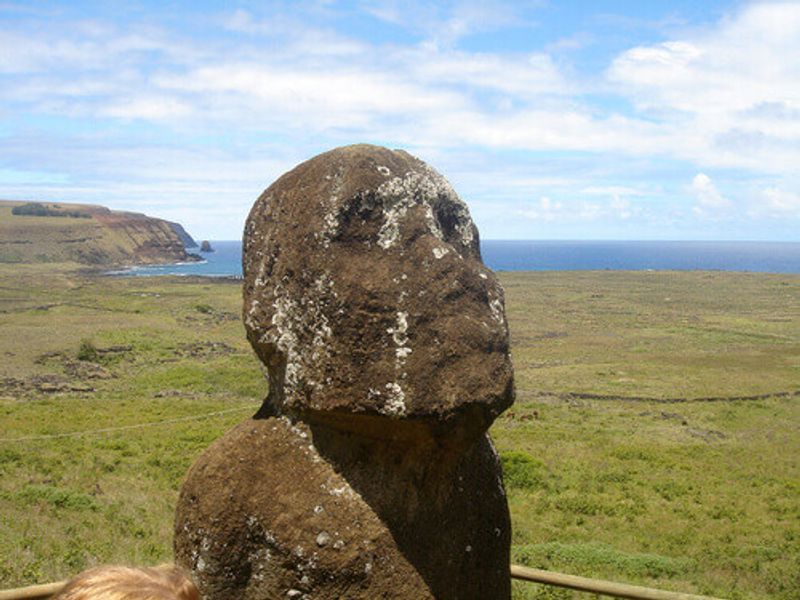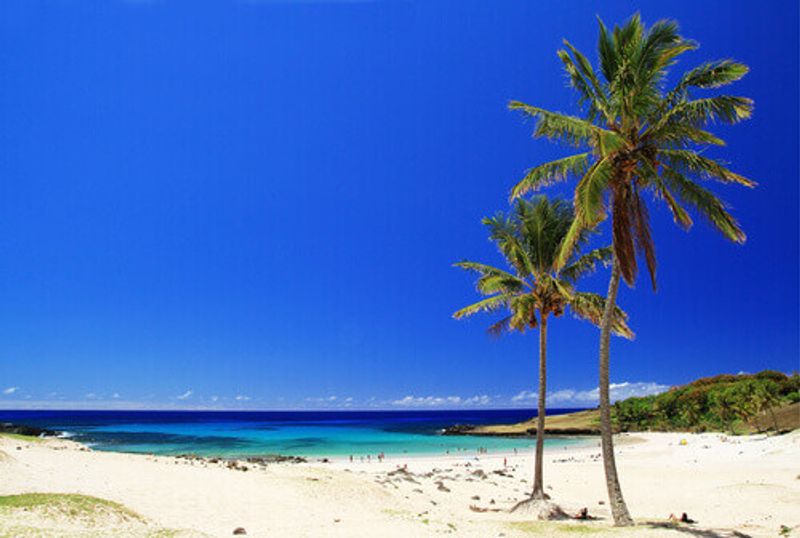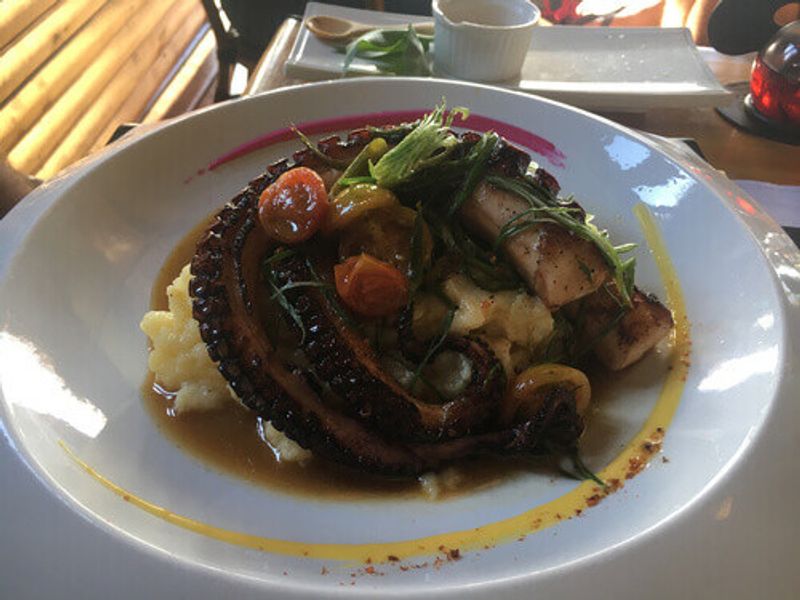Famous for its stone moai statues, there’s more than meets the eye on the ancient island of Rapa Nui
Over the years, Rapa Nui (once known as Easter Island) has become synonymous with the ancient mystery of its iconic humanoid monoliths, or moai. The remote Polynesian Island, nestled in the Pacific Ocean, is part of Chilean territory, and has reverted to its original name, also called Great Rapa, or 'the navel of the world.' Rapa Nui is also the name of its indigenous people, who came to the island around 300 BC.
Rapa Nui also hosts the Tapati Festival every February, a two-week long celebration of indigenous culture, sports, dance, and of course, food. It’s a fantastic time to experience the hospitality of the native people, including the amazing spectacle of haka pei, which involves sledding down a volcanic slope on a toboggan made of banana tree trunks.
Meet the Moai
The moai are one of the biggest archaeological mysteries in the world, as we know little about their construction or erection process; the current standing moai were re-erected by modern explorers following the great huri moai (statue toppling) in the late 1700s during a civil war between rival tribes. Arranged in a rough perimeter around the island, the moai face inwards, as if to gaze over their descendants’ lands. It is a common belief that these statues – which include bodies, usually atop a ceremonial platform (ahu) – represent the ancestors of the Rapa Nui people. Some of the moai originally had eyes made of coral or black obsidian, while some were left eyeless. Historians and archaeologists have questioned how ancient tribes moved the heavy rock from place to place across the island – each moai is about 12.5 tonnes – theories include 'walking' the statues by shuffling them along the ground, or putting them on log rollers.
Things to do
The Rapa Nui National Park is a UNESCO World Heritage Site and a must-visit spot, not just for the moai, but for its ancient villages, volcanic peaks, and breathtaking views. There are strict rules forbidding visitors to touch the moai, which are sacred. Visit Rano Raruku – a picturesque volcanic crater with half-buried and half-finished moai – home of the quarry where most of the stone was mined to make these enigmatic statues.
Take a hike over to Rano Kau, another stunning volcanic crater with a freshwater lake, for more surreal landscapes, old petroglyphs, and inscriptions. Check out the island’s handful of white sandy beaches, or sign up for scuba diving, but be warned that the underwater moai you might see isn’t real – it’s a leftover prop from the old Kevin Costner film, Rapa-Nui.
Things to eat
Food can be expensive here because of the sheer cost of importing perishable produce from the mainland. Stick to the super-fresh seafood in the form of down-to-earth local cuisine with a touch of Chilean influence (think empanadas). There’s plenty of tuna, as well as red kana kana, which is often served as ceviche. Keep in mind that lobster is a protected item here and may not be available during certain seasons. Try a pisco sour, or a local beer from the Mahina Brewery – arguably the most remote brewery in the world.
